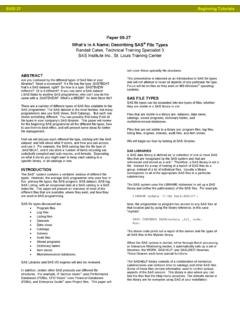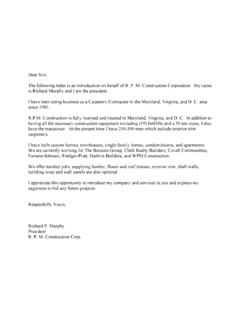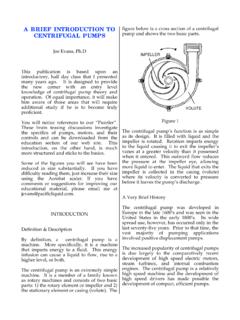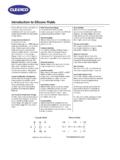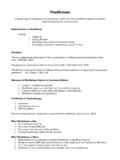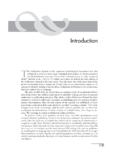Transcription of 079-2008: A Step-by-Step Introduction to PROC …
1 SAS Global Forum 2008 Applications Development Paper 079-2008. A Step-by-Step Introduction to PROC report . David Lewandowski, Thomson Healthcare, Evanston, IL. ABSTRACT. Have you read the description of PROC report in the SAS manual and been left scratching your head wondering where to start? Then, here's a step by step Introduction . It walks through the basics, one feature at a time, so you can see each one's impact on the report . When you're finished, you will already know how to create ninety percent of the reports you need. And more importantly, you will have a context so you can go back to the manual and learn the advanced features.
2 Introduction . The syntax of PROC report is different from all the other procedures and many of us found the manual less than helpful in learning its unique statements. Most of us turned to a colleague and asked him to explain PROC report . We got a brief Introduction and a set of sample code that we've been modifying ever since. This paper will give you the same thing a simple Introduction and lots of sample code to enhance as needed. step 1: CREATE A SMALL DATASET FOR REPORTING. To start off, let's create a dataset to use for reporting say monthly wine sales by zip code and county.
3 Here's the program and the resulting listing: data mnthly_sales; Raw Data length zip $ 5 cty $ 8 var $ 10;. input zip $ cty $ var $ sales; Obs ZIP CTY VAR SALES. label zip="Zip Code". cty="County" 1 52423 Scott Merlot var="Variety" 2 52423 Scott Chardonnay sales="Monthly Sales"; 3 52423 Scott Zinfandel datalines; 4 52423 Scott Merlot 52423 Scott Merlot 186. 5 52388 Scott Merlot 52423 Scott Chardonnay 6 52388 Scott Chardonnay 52423 Scott Zinfandel 7 52388 Scott Zinfandel 52423 Scott Merlot 8 52200 Adams Merlot 52388 Scott Merlot 9 52200 Adams Chardonnay 52388 Scott Chardonnay 10 52200 Adams Zinfandel 52388 Scott Zinfandel 11 52200 Adams Chardonnay 52200 Adams Merlot 12 52199 Adams Merlot 52200 Adams Chardonnay 246 13 52199 Adams Chardonnay 52200 Adams Zinfandel 14 52199 Adams Zinfandel 52200 Adams Chardonnay 52199 Adams Merlot 52199 Adams Chardonnay 52199 Adams Zinfandel.
4 Proc print data=mnthly_sales;. title "Raw Data";. run;. SYNTAX. Next, let me describe PROC report 's syntax. The COLUMN statement is used to list each report column. Each column, in turn, has a DEFINE statement that describes how that column is created and formatted. You use the TITLE statement to specify the title at the top of each page. PROC report DATA=datasetname <options>;. TITLE title text;. COLUMN variable list and column specifications;. DEFINE column / define type and column attributes;. DEFINE column / define type and column attributes;.. RUN;. 1. SAS Global Forum 2008 Applications Development step 2: A SIMPLE report .
5 Putting the data and a basic PROC report together . proc report data=mnthly_sales nofs; Simple report title1 "Simple report ";. column cty zip var sales; Zip Monthly define cty / display; County Code Variety Sales define zip / display; Scott 52423 Merlot 186. define var / display; Scott 52423 Chardonnay define sales / display; Scott 52423 Zinfandel run; Scott 52423 Merlot Scott 52388 Merlot Scott 52388 Chardonnay Scott 52388 Zinfandel Adams 52200 Merlot Adams 52200 Chardonnay 246. Adams 52200 Zinfandel Adams 52200 Chardonnay Adams 52199 Merlot Adams 52199 Chardonnay Adams 52199 Zinfandel If you compare Simple report to Raw Data created in step 1, you will notice a few differences.
6 Simple report doesn't have an OBS column the variables are listed in their order in the column statement the column headers are the labels not the variable names the column headers are adjusted to the column width, not the other way around By the way, nofs is used to turn off the procedure's interactive features. step 3: SOME FORMATTING OPTIONS. On the define statement, you can specify the formatting options for that column. format applies the standard SAS. formats to the column, width sets the column width, flow wraps the text within the width you specified, and noprint suppresses printing that column.
7 You can replace the label as the column heading by specifying the new heading in quotes. The slash ( / ) is the line break symbol used to force the heading to wrap lines. The PROC. report option headline adds a line after the column headings and the headskip option adds the blank line. Let's add formatting to Simple report . proc report data=mnthly_sales nofs Simple Formatted report headline headskip;. title1 "Simple Formatted report "; County Zip Monthly column cty zip var sales; Name Code Variety Sales define cty / display width=6 County/Name'; ------------------------------------- define zip / display.
8 Define var / display; Scott 52423 Merlot define sales / display format= width=10; Scott 52423 Chardonnay run; Scott 52423 Zinfandel Scott 52423 Merlot Scott 52388 Merlot Scott 52388 Chardonnay Scott 52388 Zinfandel Adams 52200 Merlot Adams 52200 Chardonnay Adams 52200 Zinfandel Adams 52200 Chardonnay Adams 52199 Merlot Adams 52199 Chardonnay Adams 52199 Zinfandel 2. SAS Global Forum 2008 Applications Development step 4: THE ORDER DEFINE TYPE. In a DEFINE statement, the word after the slash specifies the define type for that column. The valid define types are DISPLAY, ORDER, GROUP, ANALYSIS, ACROSS and COMPUTED.
9 Up to now, we've been using the DISPLAY. define type. Now, let's use each of the other five types in turn. The ORDER define type specifies the column used to sort the report . proc report data=mnthly_sales nofs Ordered report (Order Type). headline headskip;. title1 "Ordered report (Order Type)"; County Zip Monthly column cty zip var sales; Name Code Variety Sales define cty / order width=6 County/Name'; ------------------------------------- define zip / display;. define var / display; Adams 52200 Merlot define sales / display format= width=10; 52200 Chardonnay run; 52200 Zinfandel 52200 Chardonnay 52199 Merlot 52199 Chardonnay 52199 Zinfandel Scott 52423 Merlot 52423 Chardonnay 52423 Zinfandel 52423 Merlot 52388 Merlot 52388 Chardonnay 52388 Zinfandel Notice how cty, the ordered column, doesn't repeat in each row, only when it changes.
10 step 5: THE GROUP DEFINE TYPE. The GROUP define type consolidates all the observations with the same unique combination of grouped variables. You can specify the order of the rows within the group by using the ORDER= option of the DEFINE statement. In this case they are ordered by descending frequency of var. proc report data=mnthly_sales nofs Grouped report (Group Type). headline headskip;. title1 "Grouped report (Group Type)"; County Zip Monthly column cty zip var sales; Name Code Variety Sales define cty / group width=6 County/Name'; ------------------------------------- define zip / group.









